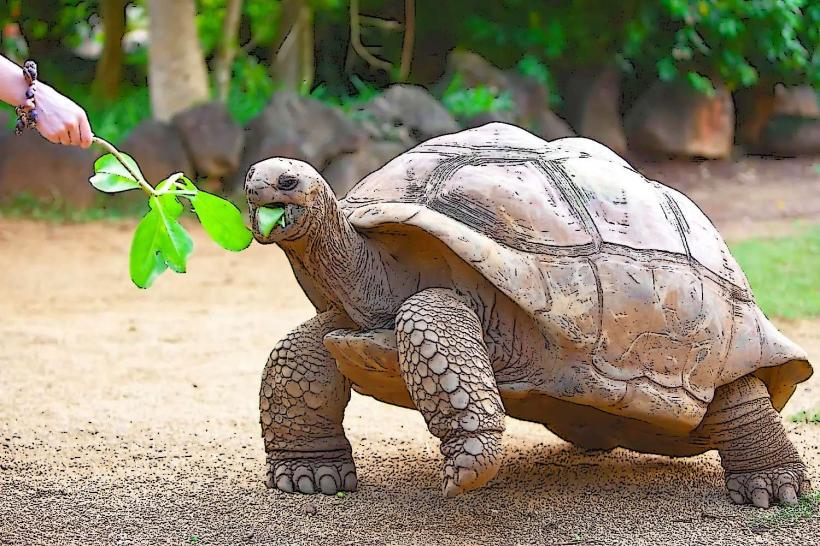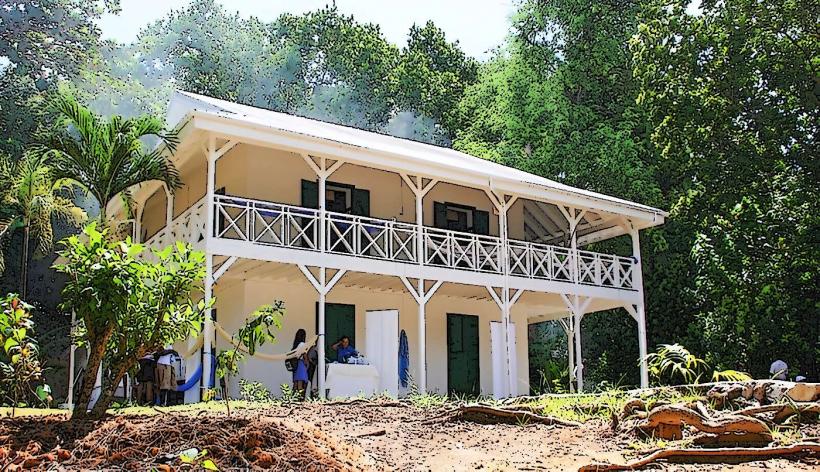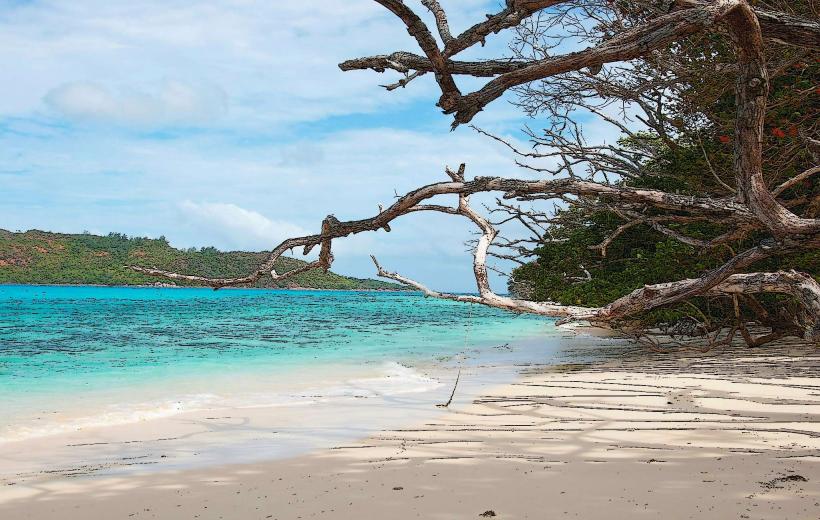Information
Landmark: Curieuse Marine National ParkCity: Curieuse Island
Country: Seychelles
Continent: Africa
Curieuse Marine National Park is a protected area located around Curieuse Island, one of the smaller islands in the Seychelles archipelago, specifically near Praslin Island. It is a crucial part of the region’s conservation efforts, offering protection to both terrestrial and marine environments. The park encompasses a marine reserve and the nearby Curieuse Island, which is home to a unique mix of wildlife, including the Aldabra giant tortoises.
Key Features of Curieuse Marine National Park:
Marine Environment:
- The Curieuse Marine National Park is primarily a marine reserve covering approximately 16 square kilometers (6.2 square miles) of coastline and surrounding waters.
- It is home to diverse marine life, including coral reefs, seagrass beds, and mangrove forests. These habitats support a variety of species such as fish, sea turtles, and invertebrates.
- Coral Reefs: The marine park's reefs are home to an array of vibrant marine species, including reef fish, moray eels, and clams, making it a popular destination for snorkeling and diving.
Curieuse Island:
- Curieuse Island is an important part of the Curieuse Marine National Park. The island itself is protected due to its unique biodiversity, particularly its role as a sanctuary for Aldabra giant tortoises.
- The Aldabra giant tortoises were introduced to the island as part of a conservation program to help establish a viable population outside their native Aldabra Atoll. Visitors to the island can interact with these giant tortoises, which roam freely throughout the island.
Ecological Importance:
- The park encompasses a range of diverse ecosystems, from mangrove swamps to coastal habitats, which are vital for the health of the Seychelles' coastal environment.
- Mangrove Forests: The park has extensive mangrove forests along its coastline, which provide an important nursery habitat for juvenile marine species and help protect the shoreline from erosion.
- Seagrass Meadows: These meadows are critical for supporting marine life, including sea turtles that feed on the seagrass, and they act as carbon sinks, playing a key role in the fight against climate change.
Wildlife:
- Apart from the iconic Aldabra giant tortoises, Curieuse Island is home to a variety of bird species, such as the white-tailed tropicbird, and other native fauna, including lizards and crabs.
- The surrounding marine waters are frequented by sea turtles, particularly the hawksbill and green sea turtles, which come to the shores to nest. Snorkeling and scuba diving in the area allow visitors to see these marine creatures in their natural habitat.
Conservation Efforts:
- The establishment of the Curieuse Marine National Park is part of a broader effort to protect the delicate ecosystems of the Seychelles, particularly the marine life and Aldabra tortoises.
- The park plays a significant role in preserving the biodiversity of the area and in ongoing conservation efforts, such as the Aldabra tortoise breeding program, which aims to increase the population of these endangered reptiles both on Curieuse Island and other islands in the Seychelles.
- The Seychelles National Parks Authority oversees the management and protection of Curieuse Marine National Park, ensuring that the park’s resources are conserved and that visitors engage in responsible tourism practices.
Activities and Visitor Experience:
- Snorkeling and Diving: The clear, warm waters of the park are perfect for snorkeling and diving. Visitors can explore coral reefs, swim with tropical fish, and spot sea turtles and other marine species.
- Guided Tours: Visitors can explore Curieuse Island on foot, with guided tours that highlight the history, flora, and fauna of the island. A nature walk through the island’s interior takes visitors through tropical mangrove forests and offers great opportunities to spot the Aldabra tortoises.
- Beach and Relaxation: The island has beautiful, secluded beaches where visitors can relax, swim, and enjoy the surrounding natural beauty.
- Picnics: There are designated picnic spots on the island, making it a popular spot for enjoying lunch amidst stunning views of the island and the surrounding waters.
How to Visit:
- The park is easily accessible from Praslin Island, which is just a short boat ride away. There are several boat tours that offer trips to the island and the park, often as part of a day trip that includes other nearby attractions, such as Cousin Island and Sainte Anne Marine National Park.
- Boat tours usually include snorkeling stops, as well as opportunities to observe the wildlife on Curieuse Island.
Best Time to Visit:
- The best time to visit the Curieuse Marine National Park is during the dry season from May to October, when the weather is cooler, and the waters are calmer for water-based activities such as snorkeling and diving.
- The wet season (November to April) can bring occasional rain and warmer temperatures, but the park is still open for visits throughout the year.
Conclusion:
The Curieuse Marine National Park is a must-visit destination for those looking to experience the natural beauty of the Seychelles. It combines a mix of land and marine ecosystems that are crucial to the region's biodiversity. Whether you’re interested in interacting with the Aldabra giant tortoises, exploring the marine life, or simply relaxing on pristine beaches, Curieuse offers something for every nature enthusiast. As an essential conservation area, the park also serves as a reminder of the importance of preserving the unique wildlife and ecosystems of the Seychelles.




